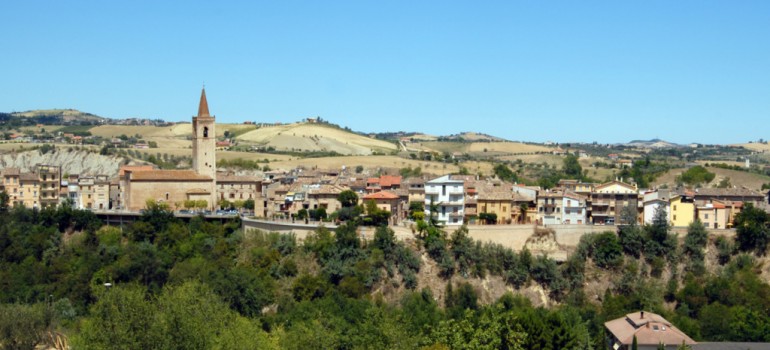
Appignano del Tronto is located 194 m. above sea level on a hill overlooking the stream Chifenti. The entire area is strongly characterized by the phenomenon of the badlands (calanchi). According to tradition, a Roman family chose the site as their home after the social war, Appignano’s foundations date back to this period. In the 9th century Count Maginardo donated Appignano and other castles to the Bishop of Ascoli, and later on it was subjected to the Farfense rule. In the 12th century the village was fortified with a sturdy wall . The urban system still shows the ancient Roman plants, and the architecture of the middle ages. In this period Appignano was fortified in defense of Ascoli against Fermo and Offida. Before 1290 it became a free commune which adopted its own statute. The Church of San Michele Arcangelo was built by Lombard masters in the first half of the 15th century, it was destroyed several times, was completely rebuilt between 1898 and 1909. The interior decoration, was executed by Joseph Pauri in those years. By the altar stands The Assumption of the Virgin by Vincenzo Pagani dated 1539 and a reliquary of the Holy Cross, which was probably made by the goldsmith Vannini ( 15th century) . At the center of Appignano one can visit the Church of St. John the Baptist (Romanesque- Gothic and Renaissance) which was renovated in the 15th and 16th century. The interior has three naves; there are a “Pietà” made of terracotta (14th century) and a “Pentecoste” painting by Simone De Magistris (1589). Just outside the town is the Church of Santa Maria del Piano Santo or “La Cona “ built on a 17th century building by the Confraternity of the Rosary”. Inside there is an important fresco: “The Coronation of the Virgin”, attributed to the Master of Offida (14th century).